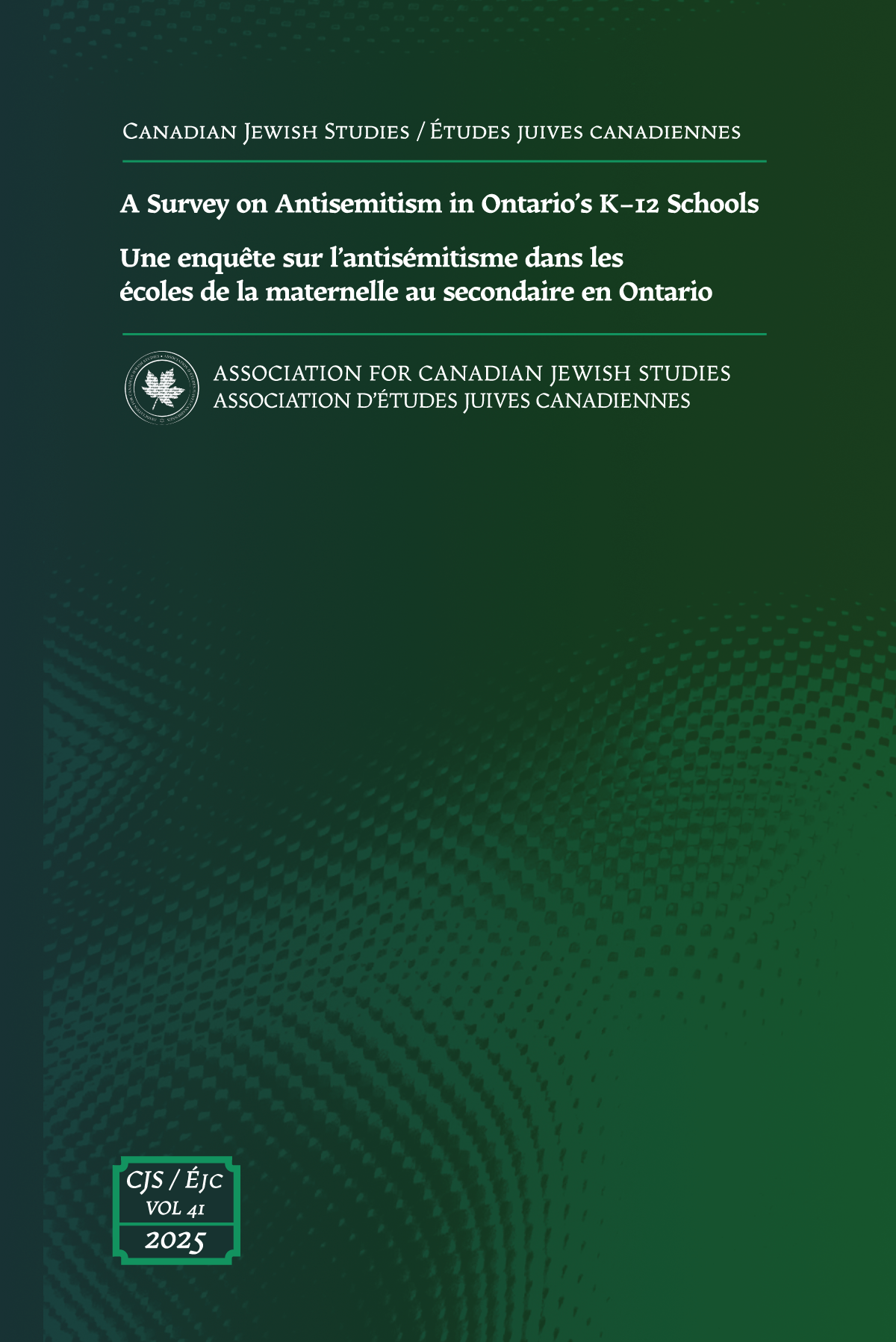A Survey on Antisemitism in Ontario's K-12 Schools
DOI:
https://doi.org/10.25071/1916-0925.40434Keywords:
Antisemitism, Ontario, EducationAbstract
This study demonstrates the existence of a disjuncture between (1) the purported desire of Ontario schools to ensure that all students feel respected, included, and valued; and (2) the treatment of their Jewish students. Its main source of information is a survey of 599 Jewish parents and their reports on 781 antisemitic incidents in Ontario K–12 schools. Antisemitic incidents are defined as those that parents and their children consider antisemitic. The 781 incidents reported here were directly experienced by an estimated 10 percent of Ontario’s approximately thirty thousand Jewish school-age children. The survey was in the field from late January to early April 2025. It covers incidents that took place in the sixteen months (thirteen school months) from October 2023 to January 2025. The survey sample is roughly representative of the two-thirds of Ontario Jews most closely tied to the Jewish community by membership in synagogues or other Jewish organizations.
Key findings of the survey include the following:
- More than 40 percent of antisemitic incidents made no mention of Israel or the Israel-Hamas war. They involved Nazi salutes, assertions that Hitler should have finished the job, and the like. Fewer than 60 percent of antisemitic incidents referred to Israel or the Israel-Hamas war.
- Nearly one in six antisemitic incidents were initiated or approved by a teacher or involved a school-sanctioned activity.
- Just over two-thirds of antisemitic incidents occurred in English public schools and nearly one-fifth took place in Jewish private schools. Fourteen percent of incidents occurred in French, Catholic, and non-Jewish private schools.
- Nearly three-quarters of antisemitic incidents take place in the Toronto District School Board, the Ottawa-Carleton District School Board, and the York Region District School Board.
- The most common emotional reactions to antisemitic incidents on the part of their victims involved anger (31 percent), fear of returning to school or of being bullied (nearly 27 percent), and worrying about losing non-Jewish friends and being socially isolated (more than 27 percent).
- Some children insisted that their parents not report an antisemitic incident, fearing it would become public, and they would consequently become the target of increased harassment or bullying. Some removed clothing and jewelry with Jewish symbols and Hebrew lettering so they would not be identified as Jewish.
- Forty-nine percent of antisemitic incidents reported to school authorities were not investigated. In another nearly 9 percent of cases, school authorities denied the incident was antisemitic or recommended that the victim be removed from the school permanently or attend school virtually.
- In under one-third of cases reported to school authorities, schools responded by providing counselling for the targeted child or the perpetrator, taking punitive action against the perpetrator, creating or modifying a program to promote ethnic, racial, and religious tolerance of Jews, or reporting the incident to the police.
- Because of antisemitic incidents experienced by their children, 16 percent of parents moved their children to another school or are considering doing so. Some relocated residences to enrol their children in different schools.
- A Jewish private school is the choice of 39 percent of parents who moved their children to another school or are considering doing so.
Downloads
Published
How to Cite
Issue
Section
License

This work is licensed under a Creative Commons Attribution-NonCommercial-NoDerivatives 4.0 International License.
Canadian Jewish Studies/ Études juives canadiennes is a journal dedicated to the open exchange of information; therefore the author agrees that the work published in the journal be made available to the public under a Creative Commons Attribution-Noncommercial-No Derivative Works 4.0 Unported License. The publisher (Association for Canadian Jewish Studies / Association d'études juives canadiennes) recognizes the author's intellectual property rights; authors retain copyright over their work. The author grants the publisher first serial publication rights and the non-exclusive right to mount, preserve, and distribute the intellectual property. The journal is digitized and published on the open access website http://pi.library.yorku.ca/ojs/index.php/cjs/index.







